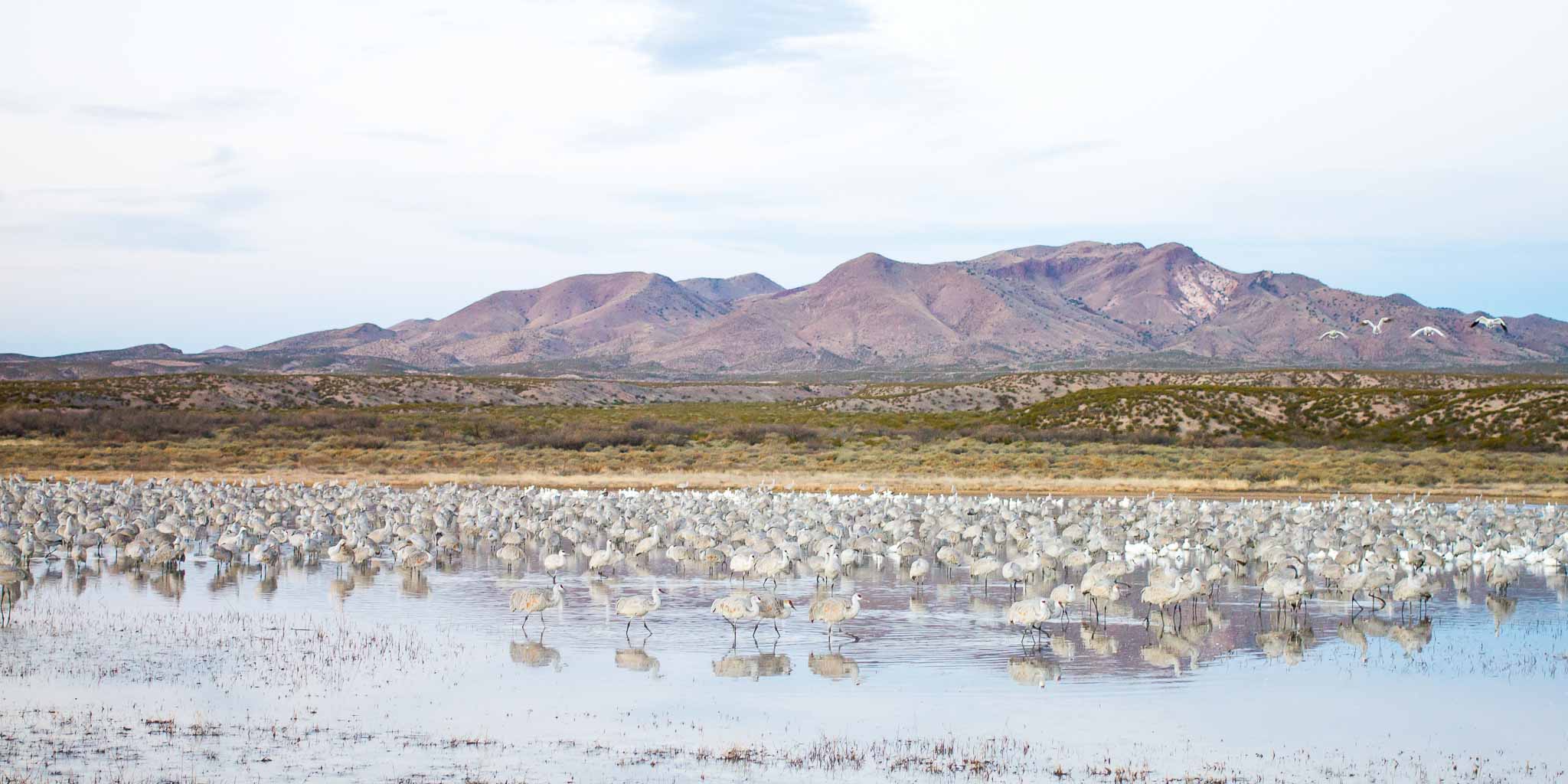New Mexico
- Angel Peak Scenic Area
- Bosque del Apache NWR
- Bosque Birdwatchers
- Ladd S. Gordon WMA
- Pancho Villa State Park
- Cumbres Pass
- City of Rocks State Park
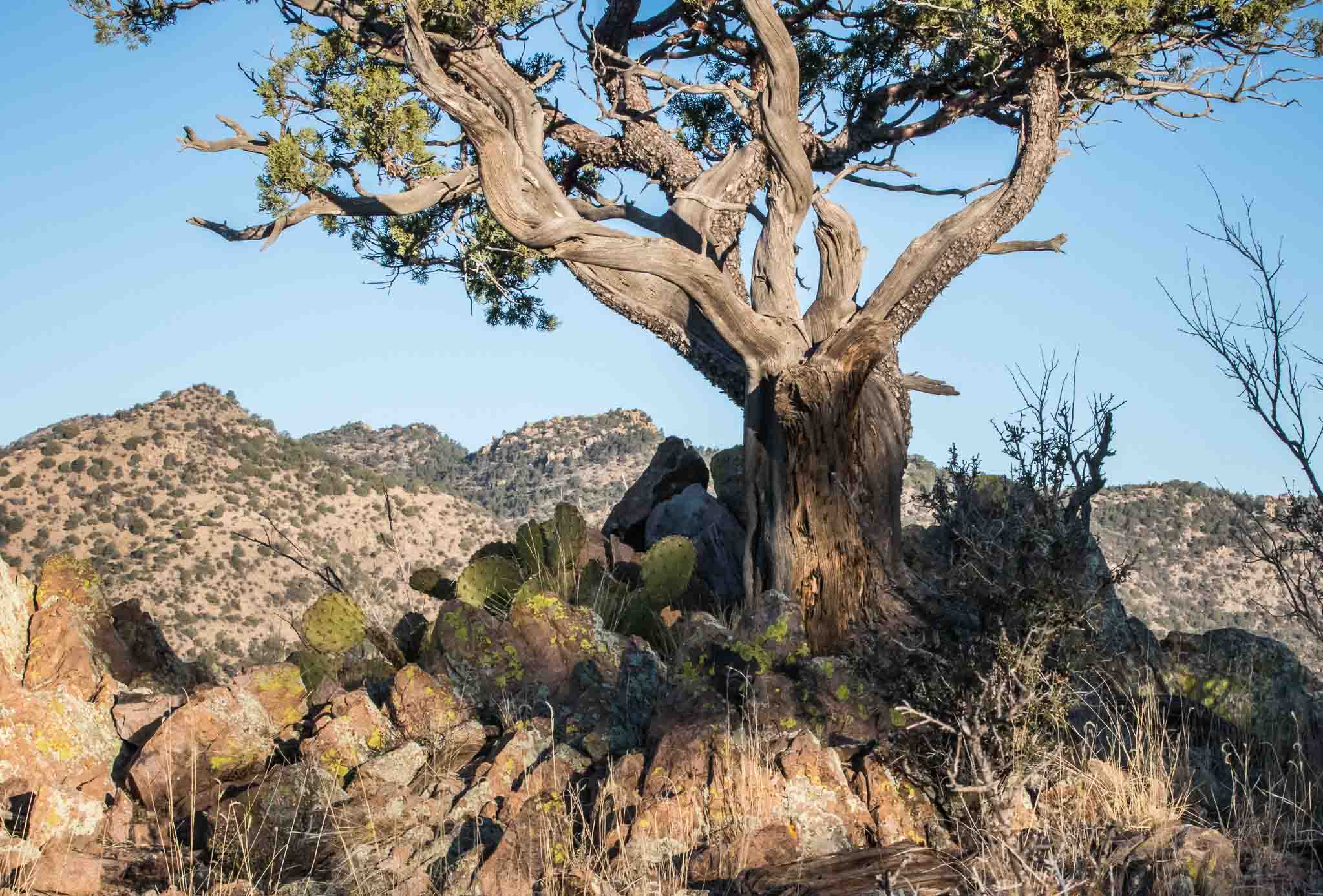
Oldtimer at the Overlook {more...}
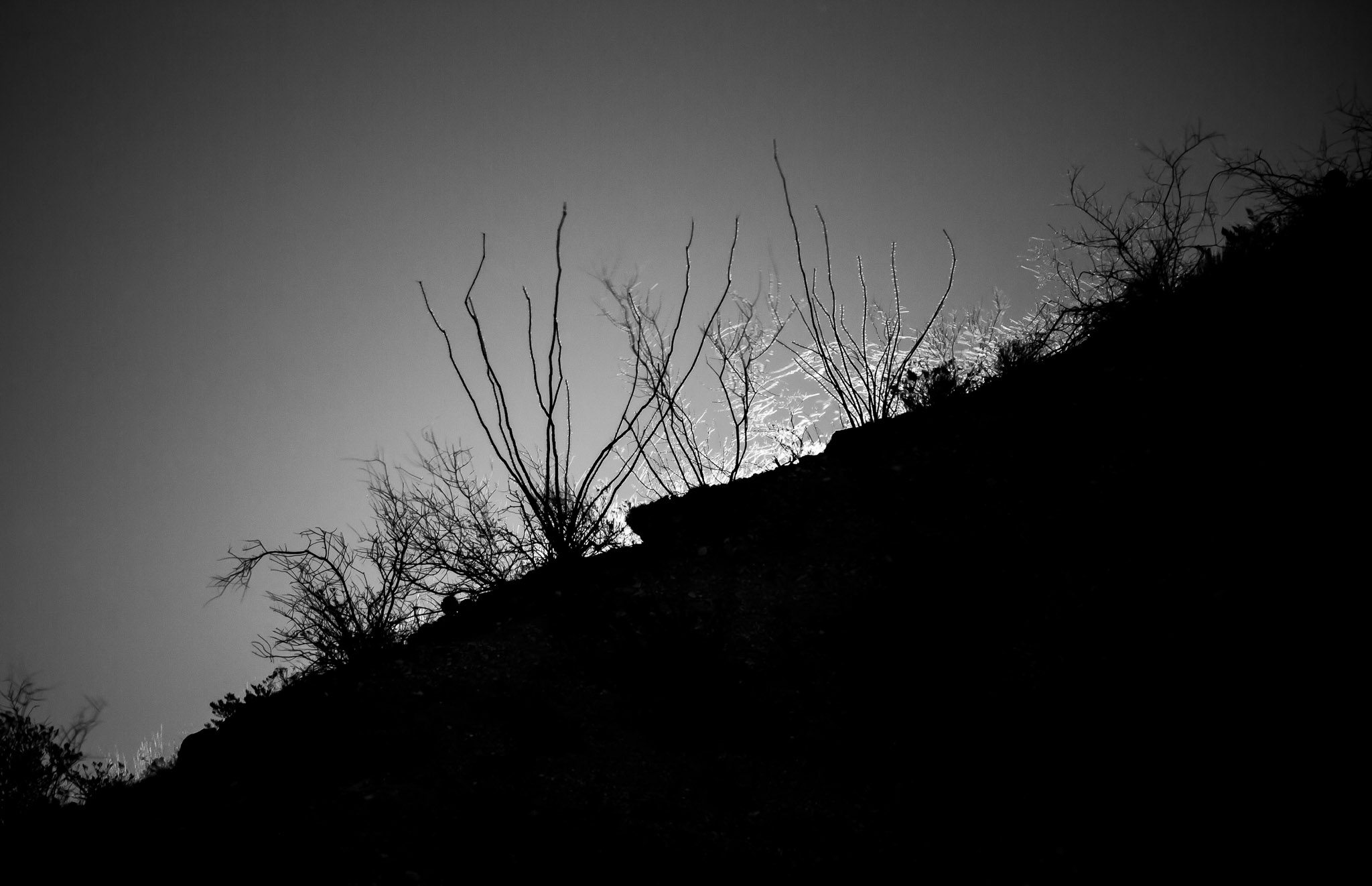
Ocotillo Moonrise {more...}
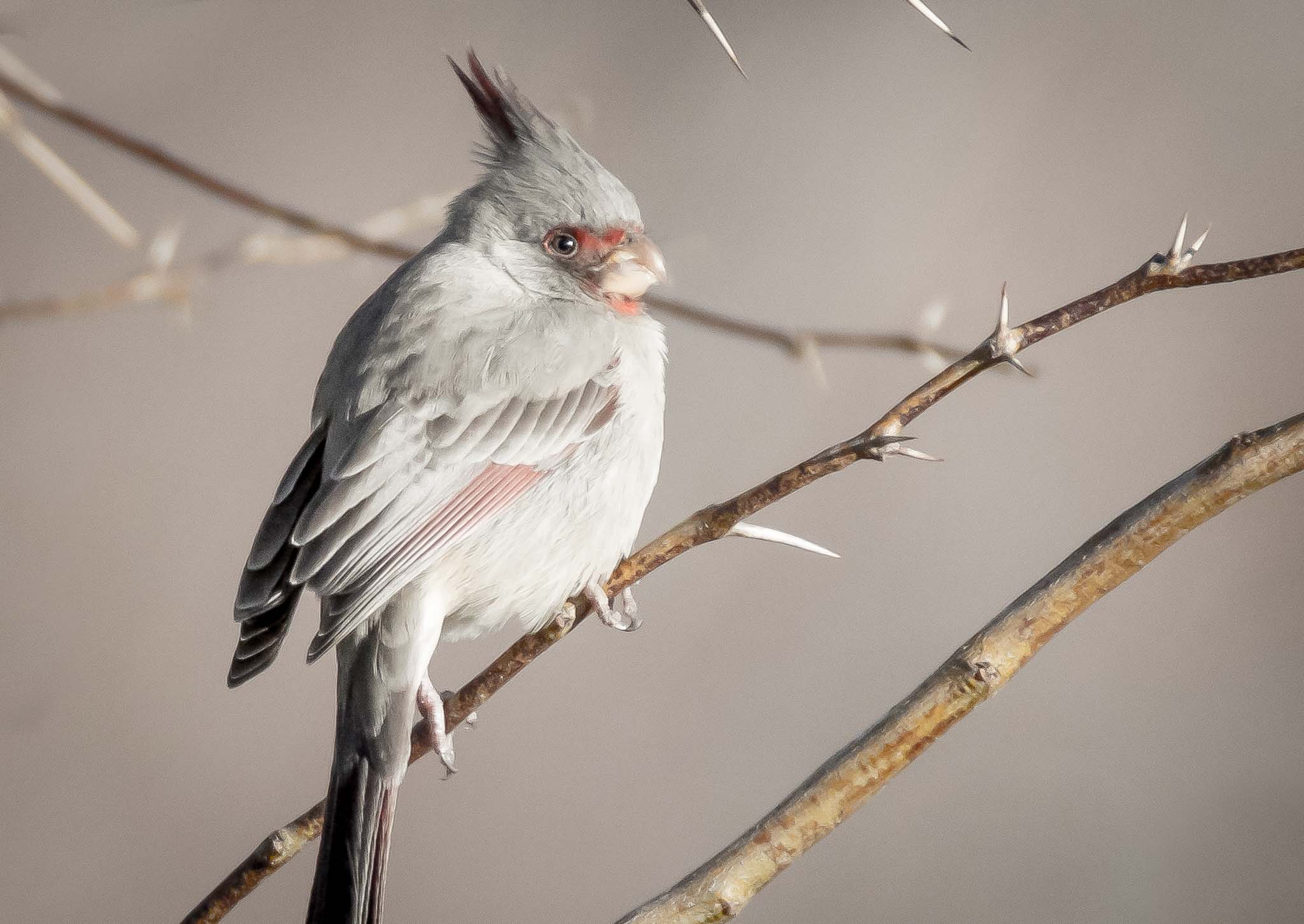
Pyrrhuloxia {more...}

Critter on the Brink {more...}

Aglow {more...}
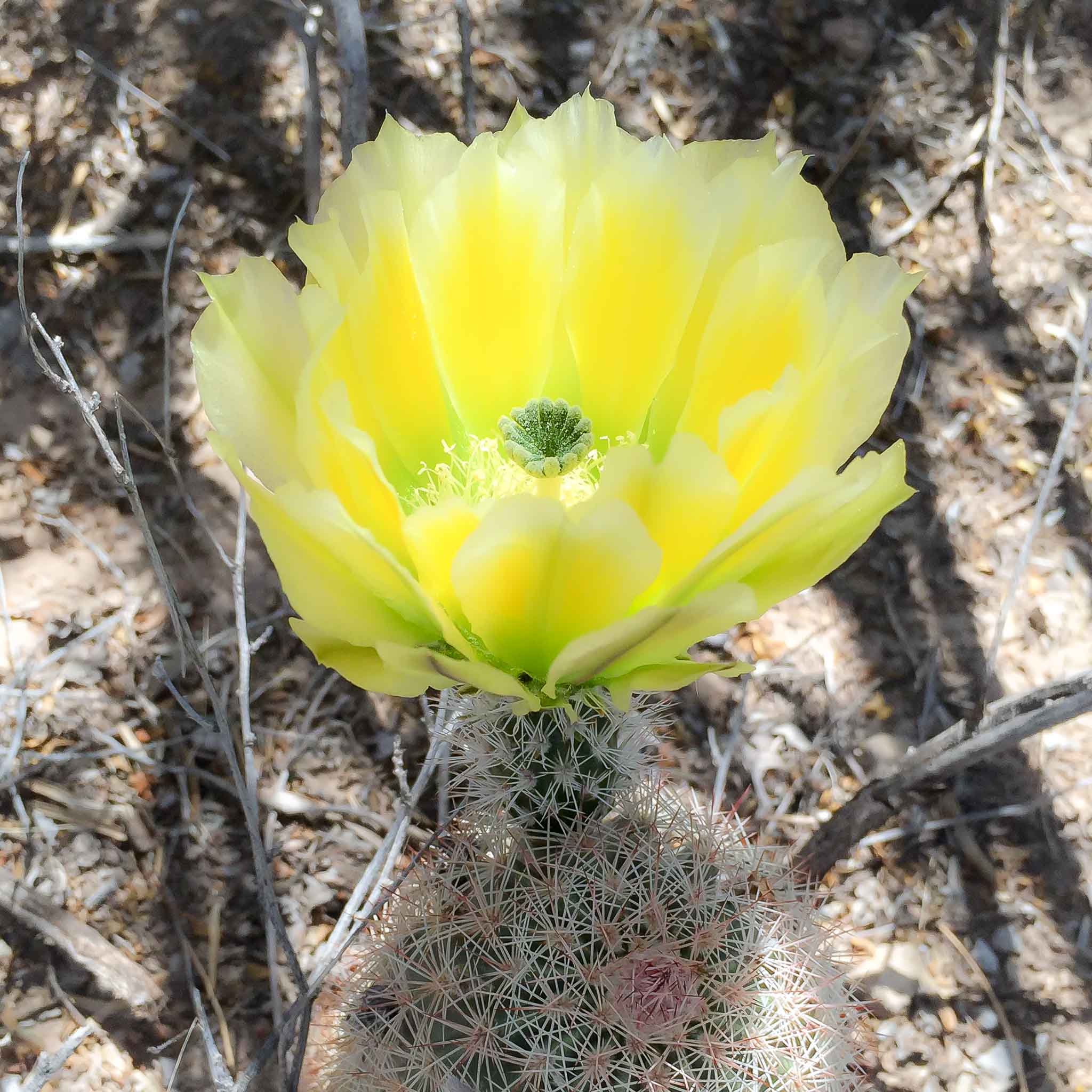
Diaphanous {more...}
Addenda to Photos
Oldtimer at the Overlook
Juniper at Daybreak, Overlooking Noonday Canyon, Gila National Forest, San Lorenzo NM
February 28, 2016
Presented with great respect for the tenacity of these old trees.
Junipers
Junipers are coniferous plants in the genus Juniperus of the cypress family Cupressacea. Depending on taxonomic viewpoint, between 50 and 67 species of juniper are widely distributed throughout the Northern Hemisphere, from the Arctic, south to tropical Africa in the Old World, and to the mountains of Central America and Ziarat Pakistan. The highest-known Juniper forest occurs at altitude of 4,900 metres in south-eastern Tibet and the northern Himalayas, creating one of the highest tree-lines on earth.
Junipers vary in size and shape from tall trees, 20–40 m (66–131 ft) tall, to columnar or low spreading shrubs with long trailing branches. They are evergreen with needle-like and/or scale-like leaves. They can be either monoecious or dioecious. The female seed cones are very distinctive, with fleshy, fruit-like coalescing scales which fuse together to form a "berry"-like structure, 4–27 mm (0.16–1.06 in) long, with 1–12 unwinged, hard-shelled seeds. In some species these "berries" are red-brown or orange but in most they are blue; they are often aromatic and can be used as a spice. The seed maturation time varies between species from 6–18 months after pollination. The male cones are similar to those of other Cupressaceae, with 6–20 scales.
Wikipedia
Ocotillo Moonrise
Full Moon Rising, Caballo Lake State Park, Caballo NM
December 24, 2015
Santa and his crew surely had an easy time navigating the heavens this brightly moonlit Christmas eve.
Merry Christmas everyone.
Pyrrhuloxia
Paseo del Rio Campground, Truth or Consequences NM
February 4, 2015
Pyrrhuloxia
The pyrrhuloxia or desert cardinal (Cardinalis sinuatus) is a medium-sized North American song bird found in the American southwest and northern Mexico. This distinctive species with a short, stout bill, red crest and wings, closely resembles the northern and the vermilion cardinals which are in the same genus.
The most obvious differences between the male desert cardinal and the northern cardinal are in their coloring. The desert cardinal is predominantly brownish-gray with a red breast, a red mask, and a yellow parrot-like bill that is stout and rounded The females of the two species resemble each other much more closely, but the shapes of their bills are diagnostic. The songs of the two species are identical, though the pyrrhuloxia's is not quite as loud. This cardinal retains the distinctive long pointed red crest present in all species.
The pyrrhuloxia is a year-round resident of desert scrub and mesquite thickets, in the U.S. states of Arizona, New Mexico, and Texas and woodland edges in Mexico. It occupies the southwestern half of Texas, approximately the southern third of New Mexico, and southeastern region of Arizona. Its range flows further south inhabiting areas from the west to east coast of Mexico north of the Sierra Madre del Sur, Trans-Mexican Volcanic Belt and Isthmus of Tehuantepec, whilst excluding the Sierra Madre Occidental. An individual of the species has reportedly been seen as far away from its dominant range as Costa Mesa, California in Orange County.
This cardinal is relatively nonmigratory, though it may occasionally stray slightly north of its usual range. The pyrrhuloxia prefers habitat along stream beds. In areas where the range of the pyrrhuloxia and northern cardinal overlap, hybridization may occur between them. There seem to be no conflicts between the species as none have yet been reported.
Wikipedia / Pyrrhuloxia
Critter on the Brink
Elephant Butte Lake State Park, Elephant Butte NM
April 4, 2016
This old weed stalk was lying on the brink of the hill along Ridge Road with the deep blue of Elephant Butte Lake in the distance behind it. It was a simple composition I couldn't resist.
Aglow
Ocotillo, Oliver Lee Memorial State Park, Alamogordo NM
April 16, 2015
The desert wildflowers are near their peak at Oliver Lee Memorial State Park with lots of yucca, many varieties of cactus, and ocotillo flames shooting up everywhere.
The majestic ocotillo are among my favorite spring desert wildflowers and these backlit and glowing in the late afternoon sun caught my eye.
Ocotillo, Fouquieria splendens
Fouquieria splendens (commonly known as ocotillo, but also referred to as coachwhip, candlewood, slimwood, desert coral, Jacob's Staff, Jacob Cactus, and vine cactus) is a plant indigenous to the Sonoran Desert and Chihuahuan Desert in the Southwestern United States and northern Mexico.
Ocotillo is not a true cactus. For much of the year, the plant appears to be an arrangement of large spiny dead sticks, although closer examination reveals that the stems are partly green. With rainfall the plant quickly becomes lush with small (2–4 cm) ovate leaves, which may remain for weeks or even months.
Individual stems may reach a diameter of 5 cm at the base, and the plant may grow to a height of 10 m. The plant branches very heavily at its base, but above that the branches are pole-like and only infrequently divide further, and specimens in cultivation may not exhibit any secondary branches. The leaf stalks harden into blunt spines, and new leaves sprout from the base of the spine.
The bright crimson flowers appear especially after rainfall in spring, summer, and occasionally fall. Flowers are clustered indeterminately at the tips of each mature stem. Individual flowers are mildly zygomorphic and are pollinated by hummingbirds and native carpenter bees.
Wikipedia / Fouquieria Splendens
Diaphanous
Texas Rainbow Cactus flower, Oliver Lee Memorial State Park, Alamogordo NM
April 15, 2015
There are some spectacular blooms out here these days. I no more than arrived at Oliver Lee Memorial State Park when I came across this one I especially like.
There is at least one New Mexico Agave, Agave Parryi var Neomexicana here that is budded and about ready to bloom but alas I'll probably miss it. I'd love to stay for the blooming but I must leave in a couple of days. I've never seen one in bloom. Bummer.
Texas Rainbow Cactus, Echinocereus dasyacanthus
Echinocereus dasyacanthus plants are usually found with a single stem or 2-3 basal branches. Though it is not uncommon to find plants with 3-10 stems. The stems of Texas Rainbow Cactus are between 11–24 cm long and 5.5–7 cm wide and usually have 15-18 ribs. The spines usually overlap making the stem not visible. There is a great amount of variation in the spines characteristics. There are typically 4-12 central spines that are .5-1.2 cm long and 14-25 radial spines that are .7–2 cm long. The basic coloration of the spines are tan to yellow to pink. Some spines may be ashy-white to reddish brown, but that is less common.The flowering season for E. dasyacanthus is between the months of March and May. The large flower of the plant grow at the sides of the stem above the areoles close to the stem apex. The flowers are typically 8–12 cm long and 7–11 cm wide. The flowers smell sweet and are pollinated by bees. In the Trans-Pecos region of Texas the flowers are usually bright yellow with a green throat. Other color the flowers may be include dark to pale yellow, canary yellow, golden yellow or deep red to rose pink. Since this taxon of cacti are mostly yellow flowered, flowers that are beta cyanic and orange are less common. The tepals are relatively thick and durable compared to E. reichenbachii, but thin and soft compared to E. coccineus. The stamens of the flowers have filaments resulting in the floral throat being filled with a funnel of yellow anthers.
Wikipedia / Echinocereus Dasyacanthus
